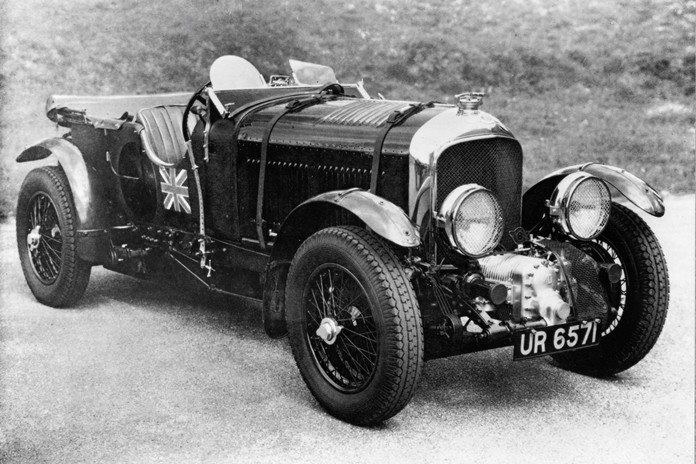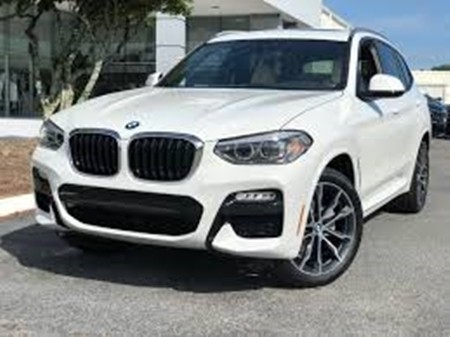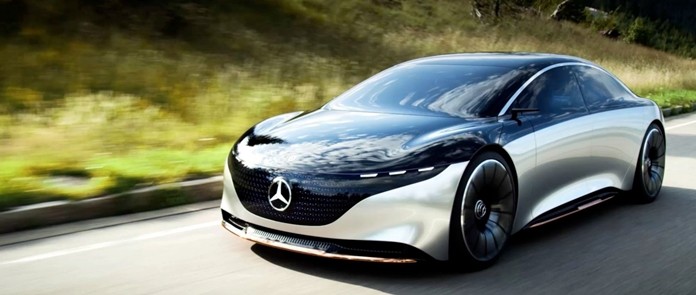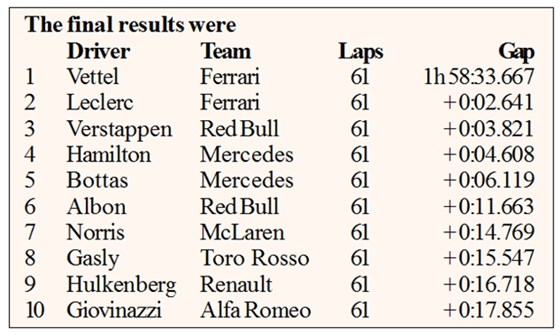
The following article is true. Not fake news.
Now is not the time to buy a Blower Bentley. They (used to be) worth millions, but are now worth about half of that. All this is being done by the Bentley Factory itself.
Intrigued? Around 1929 Bentley had five supercharged four and a half liter Bentley race cars. Ettore Bugatti called them “the fastest lorries in the world.” And they were fast, winning the Le Mans 24 hour race five times.
Those cars are now worth millions.
However, there has been a move to re-create classic vehicles, complete with running on of VIN numbers for “authenticity”. Bentley has fallen into that trap and has announced it is building a dozen 1929 four and a half blowers which will take two years.
So here you are. You can buy a “real” one for say 10 million dollars or buy a new “real” one for whatever the market will stand. And you can be sure it will be less than 10 million.
In 1929 the legendary Blower Bentley crossed the line 10 minutes ahead of the competition in the Le Mans race, beginning a period of success that created the Bentley Boy legend for both car and driver.
Bentley won in 1924 and every year from 1927 to 1930 with one of the most eclectic, dashing group of drivers ever seen, revered to this day as the epitome of 1920s excess and sophistication.
The recreation requires the one 1929 car which had been held by Bentley to be stripped down completely and 12 replica parts made from the original part. Following that, they will then assemble the 12 “new” cars, giving each one a new follow on VIN (vehicle information number) to justify the whole exercise.
Since the 1929 Blower Bentley was built 90 years ago, there will be no old workers waiting in the old folks homes to build these new ones.
Jaguar is doing this exercise with D Type Jags. Looks the same, and as the Thai T-Shirt says, “Same Same But Different.”
The end of the world is nigh?
Beijing (AP) — Chinese auto sales sank 7.7 percent in August from a year earlier extending a painful slump in the industry’s biggest global market, an industry group reported Wednesday.
Sales of sedans, SUVs and minivans declined to 1.6 million, according to the Chinese Association of Automobile Manufacturers. Total vehicle sales, including trucks and buses, shrank 6.9 percent to 1.9 million.
Chinese consumer demand has been hurt by unease about an economic slowdown and a trade war with Washington.
The industry has recorded monthly sales declines since June 2018, squeezing automakers that are spending heavily to meet government targets to develop electric cars.
Sales of electric and hybrid vehicles fell 15.8 percent from a year ago to 85,000.
The market segment has struggled as the government phases out subsidies that helped to make China the biggest market for electrics. Beijing is using sales quotas to shift the financial burden of promoting electrics to automakers. That raises the cost to buyers.
Sales by Chinese brands fell 10.2 percent in August from a year earlier to 614,000. They lost 1.1 percentage points of market share to 37.2 percent.
Auto sales for the eight months through August were off 12.3 percent from a year earlier at 13.3 million.
Minivan sales declined 22.9 percent through August. SUV sales were off 10 percent and sedans down 12.6 percent.
The Latest: BMW gives glimpse of future offerings
Frankfurt, Germany (AP) — At the Frankfurt auto show, BMW’s marketing chief says giving customers a broad choice among internal combustion, hybrid and battery-powered cars is the right approach to a changing market.
Pieter Nota says the Munich-based luxury automaker delivers “power of choice” to consumers by offering “the drive train that they want and need.” The company will add a battery-only version of its X3 SUV next year to round out conventional and hybrid versions of the vehicle. BMW is even showing off a concept car powered by hydrogen fuel cells.
BMW is relying on the mix of vehicles to comply with tighter C02 emissions requirements in Europe while competitor Volkswagen is making a big push into battery-only cars with its ID.3 coming to market next year despite currently low uptake by consumers of battery-powered cars.

Daimler’s Mercedes-Benz is showing off a long, sleek battery-powered concept vehicle that could join the luxury carmaker’s model lineup alongside its S-Class flagship sedans.
The Vision EQS is the latest version of the company’s EQ series of battery vehicles, which are a key theme at the Frankfurt Motor Show.

CEO Ola Kallenius said, “What we showed today is the first large-platform sedan, fully electric on a dedicated platform, so we think we can capture even more customers through having a wider offer.”
The concept, with a black LED display instead of a grille, slightly bulging wheel wells and a long, sweeping illuminated line running along the vehicle, is “a hint” of what the production car might eventually look like.
The company says the four-seater car has two electric motors that accelerate it to 100 kph (62 mph) in 4.5 seconds and an exceptional battery range of 700 kilometers (435 miles.) Kallenius declined to specify how the company achieved range beyond what other electrics currently offer.
Ford Motor Co. says that more than half of its European sales will be electric-powered by 2022 as it unveils a premium model of its Puma crossover that uses recovered braking energy to boost acceleration.
Ford showed off the Puma Titanium X on Tuesday at the Frankfurt Motor Show. The vehicle is a so-called mild hybrid, meaning it can store energy from braking and coasting in a 48-volt lithium-ion battery and send that power to the wheels to assist the gasoline engine when needed.
Ford, which got a late start in developing electric vehicles, last year sold 974,856 passenger vehicles overall in Europe.
It says it will have a battery-only SUV based on the Mustang in 2020. In the meantime it is offering plug-in hybrids that combine battery power with internal combustion engines to lower emissions and increase mileage. Like all automakers, Ford is facing stricter European Union limits on average emissions of carbon dioxide starting in 2021 and must find a lower emission vehicle mix to avoid fines.
Volkswagen CEO Herbert Diess says his company’s massive scale will enable it to make profits on large numbers of affordable electric cars it aims to sell in the next several years.
Electric competitor Tesla has not yet turned a profit while analysts say fellow German automaker BMW has lost money on its i3 electric.
Diess told The Associated Press on Tuesday, “Our approach is different. We come with high volumes, we come with a dedicated platform that is only for electric cars, and we generate a lot of scale because we are investing at the same time in China, in Europe, and in the US.”
Volkswagen is showing off the ID.3 at the Frankfurt Motor Show, a battery-powered compact with a base price under 30,000 euros ($33,000). Volkswagen aims to have 40 percent of its sales as electrics by 2030 even though such cars are currently less than 2 percent of the market in Europe.
The headwinds buffeting the auto industry are making themselves felt at the Frankfurt Motor Show, with companies confronting a slowdown in sales due to global trade uncertainty and pressure from governments to lower emissions of air pollutants and greenhouse gases.
Signs of the times at this year’s show include a slew of new, market-ready electric cars led by Volkswagen’s ID.3 compact that aim to reduce greenhouse gas emissions. There will also be protests from cyclists, environmentalists and industry critics who want a more pedestrian and bicycle-friendly transportation policy, and efforts by the auto executives to engage those critics in discussion.
Singapore street circuit brings on another bore-fest
For some reason known only to itself, the FIA has decided that the motor racing spectator wants high speed processions. And it certainly is providing that with street circuits where there is precious little chance of overtaking. The average punter is supposedly enthralled by “strategy” producing a “passing” opportunity in the pits rather than on the track. The fact that a pit stop now can be carried out under three seconds is of mild interest only, not edge of the seat stuff such as when Daniel Ricciardo goes round the outside of another car on a high speed sweeper.
The Singapore GP was just another bore-fest with the driver being unimportant and just a part of the “strategy”. Even the drivers admit to the boring nature of the racing on the streets. Max Verstappen admitting, “I wouldn’t say that today was that exciting from a racing perspective but Singapore has a lot of plus points being a street circuit, really tough on the body and just being a cool track to drive on.” Of course, the FIA tried to buoy up this circuit by holding the race at night, but it was illuminated with lighting that could show us the far side of the moon, removing the novelty of night racing.
Verstappen’s team mate, Alex Albon said, “Most of that race was just managing my tyres so it was physically easier than I expected. It was only in the last 20 laps when I was really pushing it that I could feel the strain. So, I would call it a battle of management as I started P6 and finished P6. At times it felt more like a procession than a race for me.”
Pole sitter and race leader initially, was Charles Leclerc, who looked as if he was doing it easily. However, the Ferrari pit wall changed all that with strategy that removed Leclerc’s skill advantage.
Charles Leclerc says he wants Ferrari to explain why their strategy resulted in his team mate Sebastian Vettel taking victory from him in Singapore. Vettel was the first of the two Ferrari drivers to pit which gave him the advantage of being first to run on fresher tyres. That meant when Leclerc pitted he came out behind his team mate.
Teams ordinarily give their leading driver the preference on strategy. Leclerc says he wants to know why this wasn’t the case in Singapore. “I still need some explanations just to understand fully why this decision was taken,” he said.

 |
 |
 |





